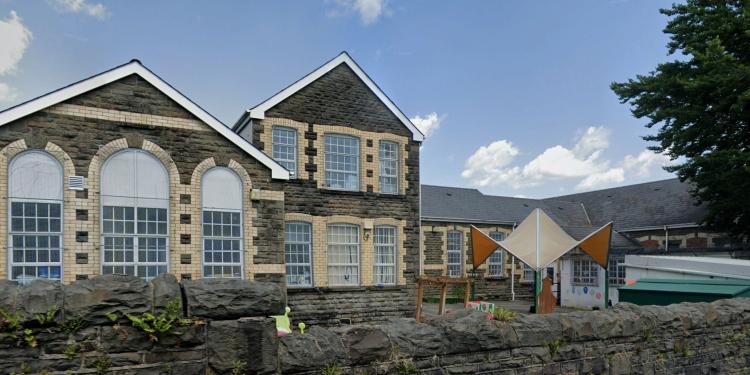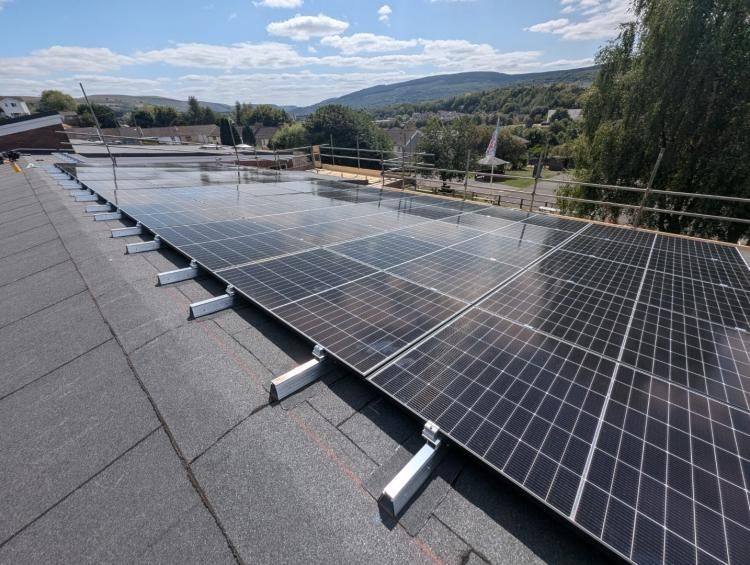From classrooms to libraries, Merthyr Tydfil goes greener

How investment in LED lighting, solar power and upgraded controls is making a difference for staff, students and visitors
Change begins with people. It’s in the nurseries where children take their first steps into education, and in the libraries where communities come together.
These everyday places show us that decarbonisation isn’t only about the large infrastructure projects; it’s also about the spaces that shape our lives and the communities that bind us together.
Merthyr Tydfil County Borough Council has been working to improve these spaces through a programme of energy saving upgrades across nurseries, schools and libraries. The work is part of the Wales Funding Programme, funded by Welsh Government and delivered by our teams at Salix. Together we’re enabling public sector organisations to invest in projects that cut costs, reduce emissions and improve everyday environments.
The Council has focused on the buildings where upgrades could have the most impact. Treharris Nursery Centre, a Victorian style building now back under full council ownership, has undergone some of the most extensive improvements.
Previously it had outdated lighting and poorly controlled boilers running at weekends. These have now been replaced with LED lighting, a 15-kW solar PV system and upgraded boiler controls, allowing the site to be managed remotely and much more efficiently.
Two libraries, Dowlais and Merthyr Central, have also benefitted from major lighting upgrades. Whilst listed building status prevented solar panels being installed within the project timeframe, the Council plans to revisit this in future phases.
Other sites include Gurnos Nursery School where rising occupancy and underfloor electrical heating were putting pressure on bills. New LED lighting and rooftop solar PV have already helped reduce demand. At Cyfarthfa Junior School solar panels were installed on a new roof following detailed feasibility visits to assess the building fabric, lighting and energy data.
We targeted the areas with the greatest need and highest energy use. With budgets tight it made sense to go for measures like LED lighting, solar PV and upgraded controls. They reduce costs, cut carbon and ease maintenance. They also help us meet Welsh Government’s carbon targets.
Local delivery has also been a priority. Energy and carbon reduction manager, Iain Goldsworthy, who oversaw the works, said: “We tendered each project and used local contractors wherever possible. We could order anything under £15,000 directly, which allowed us to keep work in the local supply chain and build strong relationships.
“We also planned installations around school holidays and library opening hours to minimise disruption.”
The results are already being felt. Iain said: “At Treharris Nursery we have seen close to a 45% reduction in energy use. Lighting has been a big part of this.
“The Head of one nursery told us everything looks brighter and better since the upgrades, as they had lots of old fittings where replacement tubes were no longer available.”
Behind the numbers is a lot of technical detail. Lighting designs were modelled with manufacturers to ensure areas were properly lit without waste. Solar PV arrays were also modelled on specialist software to size them correctly and optimise onsite generation.

Solar on the roof of Cyfarthfa Junior School ( photo credit: Merthyr County Borough Council ).
Looking ahead, the Council is already planning a potential second phase under the Salix scheme to deliver more LED, solar and control upgrades and to tackle the bigger challenge of heat decarbonisation.
Iain said: “Heat is the next step, but the business case is harder, so we will need continued support from Welsh Government to make it happen.”
Connor added: “It is not just about installations. It is about making a positive impact for the people who work and learn in these buildings and helping the Council save money and carbon.”
By combining cost savings with carbon reductions Merthyr Tydfil County Borough Council is showing how the Wales Funding Programme can help public buildings become more sustainable, creating better spaces for staff, students and local communities today and setting the stage for the next phase of decarbonisation across its estate.




